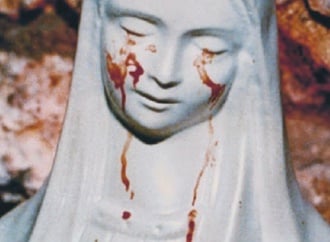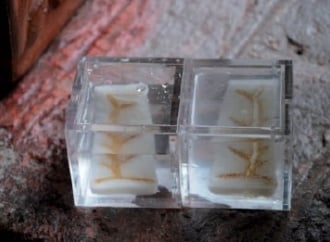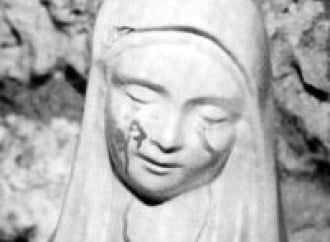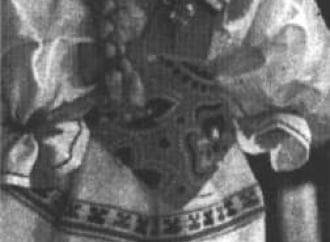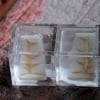- Chemistry in Britain, 31 (7), 534 (1995) -
In the first few months of this year, Italy has been inundated with peculiar 'miracles': a number of statues and icons of the Blessed Virgin Mary have reportedly wept tears of blood.
The actual flow of tears has never been recorded, although many believers, having seen icons just badly smeared with blood, swear that they have really witnessed them weeping. (The unreliability of witnesses in highly emotional situations is well known to psychology).
Sceptics claim that a simpler explanation for these paranormal religious phenomena might be put down to 'pious hoaxes', generated by an i11-intentioned faith, or even tricks (on 1 April a statue of Lenin was also found weeping!). Extensive media coverage of these stories very likely helped to spread the phenomenon.
People often ask chemists how they would make a statue weep, sometimes suggesting the possible use of deliquescent, hygroscopic or other chemical compounds. Thus, while realising that much cruder methods can be used (and have indeed been used in the many documented cases of exposed trickery) to make a statue 'weep', I wondered how I could produce a statue from which tears seemingly materialised out of the blue.As a possible solution to this challenging task I propose a simple technique which does not require holes near the eyelids, nor mechanical, electronic (or even chemical!) gimmicks. What is needed is a hollow statue made of a porous material, such as plaster or ceramic. The icon must be glazed or painted with some sort of impermeable coating. If the statue is then filled up with a liquid, the porous material will absorb it, but the glazing will stop it from flowing out.If the glazing, however, is imperceptibly scratched away on or around the eyes, tear-like drops will leak out, as if matenalising from thin air. If the cavity behind the eyes is small enough, once all the liquid has dripped out there are virtually no traces left in the icon.When I put it to the test, this trick proved to be very satisfactory, baffling all onlookers. I would welcome other sensible suggestions for better effects.I notice that, among these 'weeping Madonna' miracles, the only one officially accepted by the Catholic Church happened in Siracusa (Sicily) back in 1953. This is the best documented case so far, with many eye-witnesses to an actual case of weeping, and even a couple of amateur films showing watery tears appearing on the face out of the blue.A careful examination of an exact copy of this bas-relief (from the same manufacturer as the original) however, has proved it to be made of g1azed plaster, and to possess a cavity behind the face...
L. Garlaschelli,Department of Organic Chemistry,
University of Pavia,
Via Taramelli 10,
27 100 Pavia, ltaly.

